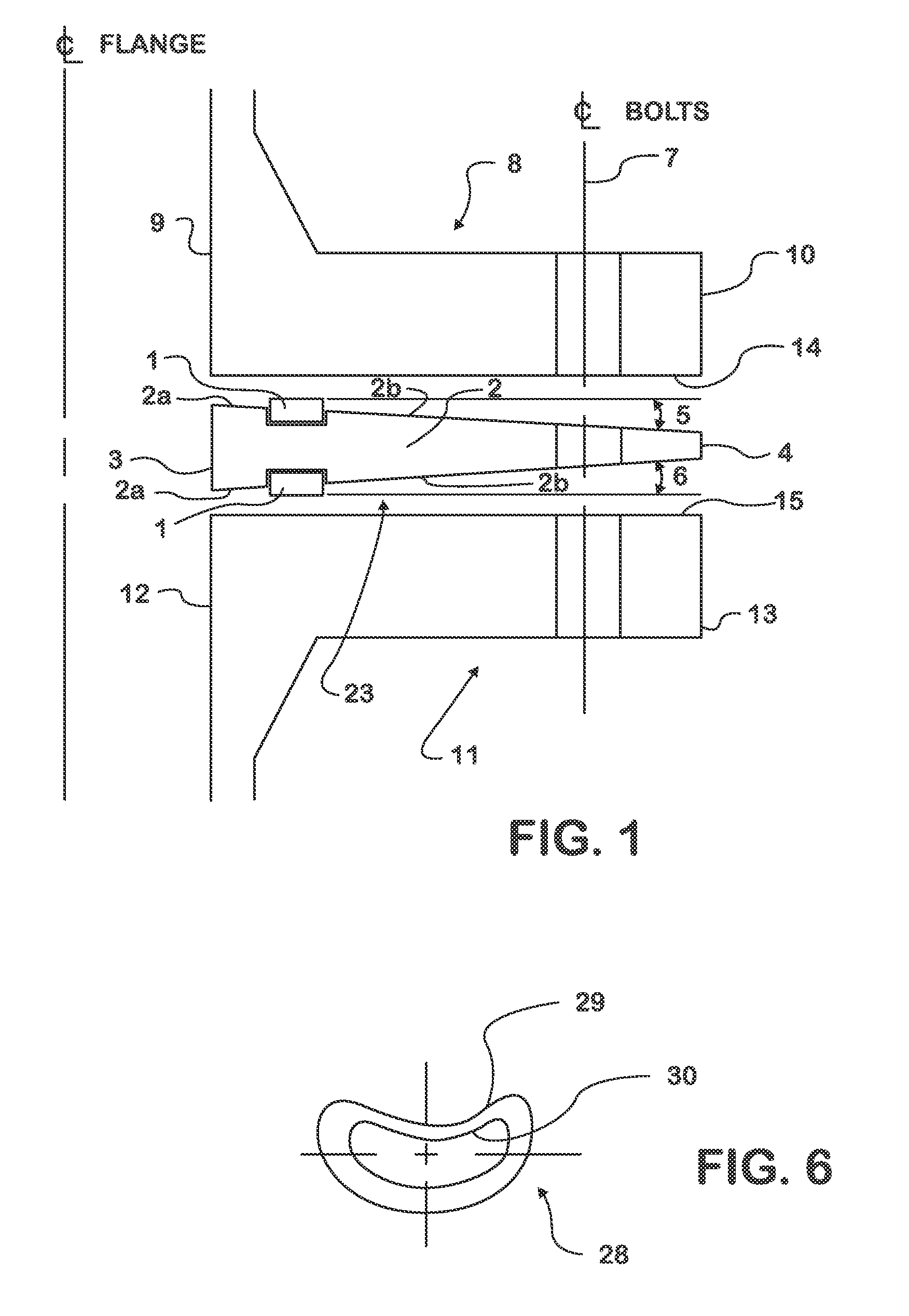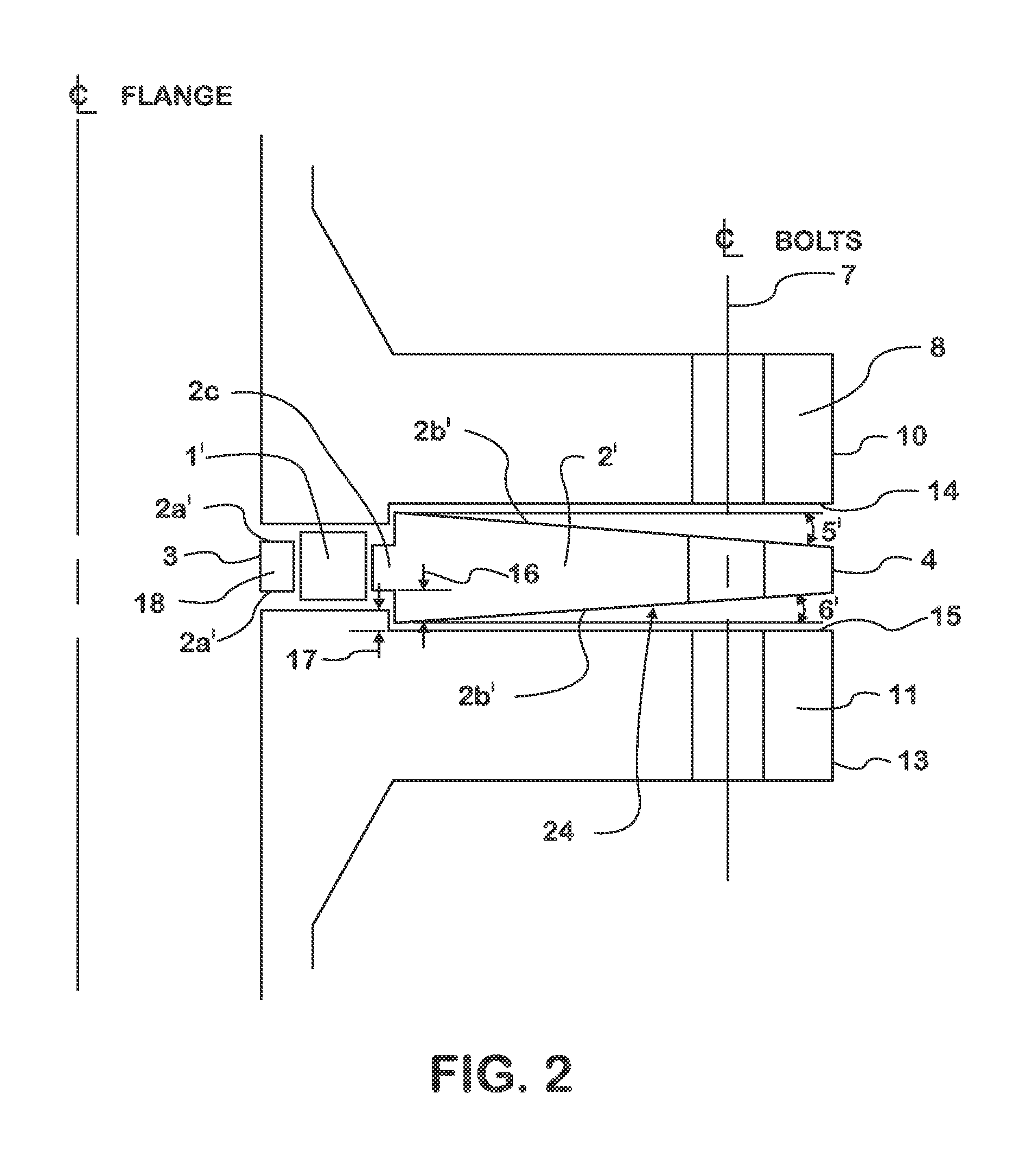Gasket with compression and rotation control
a technology of rotation control and compression, applied in fluid pressure sealed joints, cable terminations, mechanical equipment, etc., to achieve the effect of reducing bending moment, reducing bending stress, and reducing bending stress
- Summary
- Abstract
- Description
- Claims
- Application Information
AI Technical Summary
Benefits of technology
Problems solved by technology
Method used
Image
Examples
Embodiment Construction
[0031]Throughout the description of this invention the following terms and associated definitions apply:
“annular sealing element”: For gaskets with an axisymmetric shape this is an annular shaped element of approximately constant radial width. For gaskets with a non-axisymmetric shape the “annular sealing element” is a shape with an inner and outer surface that approximately follows the same shape as the inner boundary of the gasket with an approximately constant width as measured normal to the inner surface of the “annular sealing element” to its outer surface (eg. the radial distance in the case of axisymmetric geometries). In all cases the “annular sealing element” is comprised of a type of construction and / or material suitable for creating a fluid tight seal, either self sealing or requiring compression and such element(s) may or may not be integral with the compression element. When the sealing element is not integral with a compression element it is comprised of a non-integral...
PUM
 Login to View More
Login to View More Abstract
Description
Claims
Application Information
 Login to View More
Login to View More - R&D
- Intellectual Property
- Life Sciences
- Materials
- Tech Scout
- Unparalleled Data Quality
- Higher Quality Content
- 60% Fewer Hallucinations
Browse by: Latest US Patents, China's latest patents, Technical Efficacy Thesaurus, Application Domain, Technology Topic, Popular Technical Reports.
© 2025 PatSnap. All rights reserved.Legal|Privacy policy|Modern Slavery Act Transparency Statement|Sitemap|About US| Contact US: help@patsnap.com



